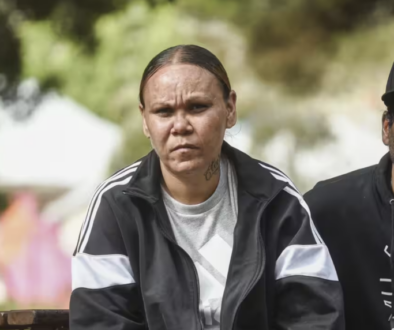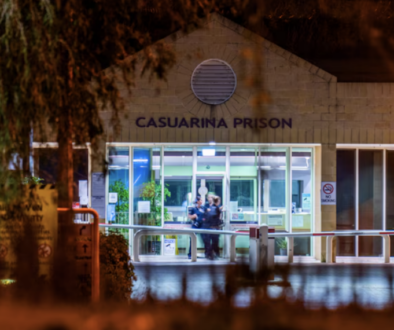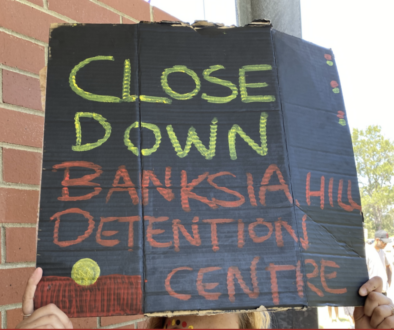Cleveland’s mum shares her memories – and her heartbreak – as inquest begins
Nadene Dodd and her young family should be at home in Laverton.
Instead, they are 950 kilometres away in a motel in Perth’s east, hoping they will finally get answers.
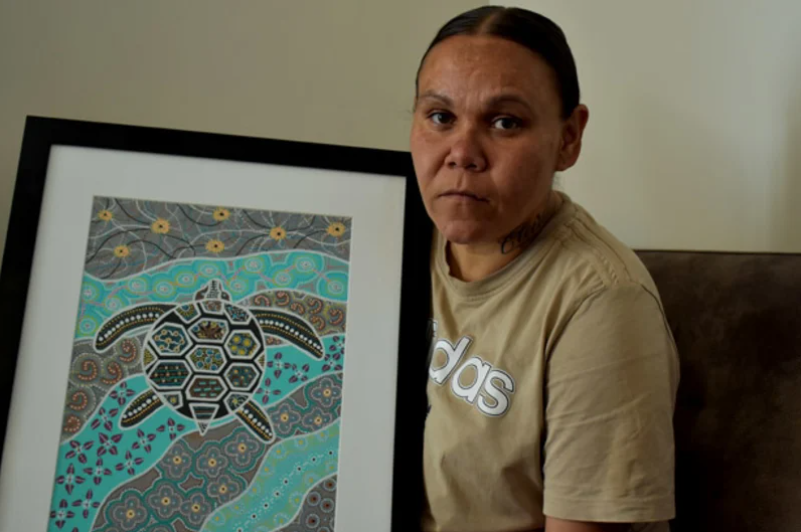
As Nadene Dodd unveils the brightly coloured dot-style turtle painting shielded by glass, her 18-month-old daughter leaps to her feet and grasps the wooden frame.
Warning: this report contains the name and image of Cleveland Dodd, with his family’s permission.
It’s the last piece of artwork her 16-year-old son Cleveland produced at the notorious Unit 18 youth wing in the adult maximum-security Casuarina Prison – the place at which he would choose to take his own life.
“Every time they [Cleveland’s siblings] see his photo, they call out ‘brother’ — they get excited,” Nadene said.
“I’ll tell them everything … when they get older.”
Nadene and her young family should be at home in Laverton, a tiny town on the western edge of the Great Victoria Desert.
Instead, they are 950 kilometres away in a motel in Perth’s east, anxiously awaiting the start of a coronial inquest on Wednesday they hope will finally deliver answers.
It has been almost six months since Nadene received a call in the early hours of October 12, telling her Cleveland — the eldest of her six children — had been rushed to hospital after trying to take his own life in his cell.
The shock was two-fold because she was unaware her son had even been relocated from Western Australia’s youth detention centre, Banksia Hill, to Unit 18 — a makeshift wing in a sprawling adult prison making headlines for its escalating violence and for subjecting children to prolonged isolation.
She spent the next week by her son’s bedside in Sir Charles Gairdner Hospital before making the gut-wrenching decision to switch off his life support prior to his passing at just after 10pm on October 19.
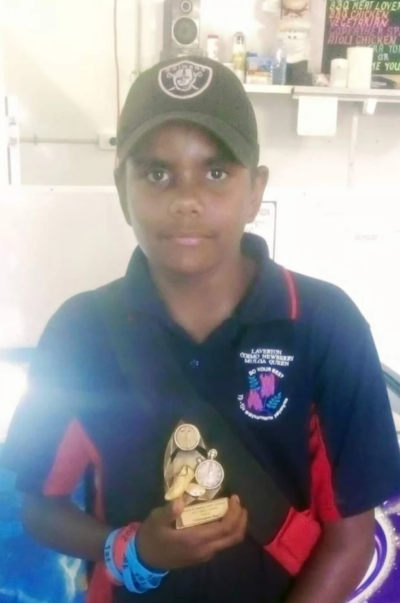
The teenager became the first minor to die in custody in WA, and the first in the country in more than a decade.
But conflicting reports had already begun to emerge about the sequence of events that led to Cleveland attempting to take his life, being found and rushed to hospital.
“[Corrective Services] told us a lot of stories, but maybe if they had actually just checked on him, he would still be here with us,” Nadene said.
“They should have helped when he was singing out for help, but they didn’t.
“You think they will watch them 24/7, that they will keep them safe, and you believe your son will come home to you.
“No mother wants their kid, a 15-year-old kid, in Unit 18 — it’s the worst feeling you can feel. We went there, and no little kid should be in there.”
An internal probe the following month uncovered myriad systematic failures, with revelations guards had faked welfare check logs and were watching movies on the night Cleveland self-harmed.
The CCTV camera in Cleveland’s cell had been covered from 3pm until 1.53am by wet toilet paper, which was only removed after staff began CPR.
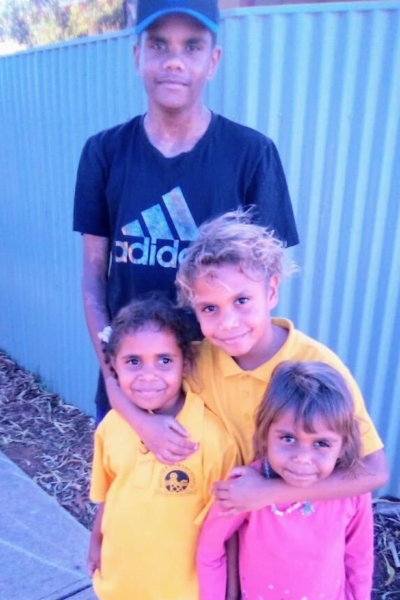
The teenager had for several weeks been in a cell with a broken air vent, which he used in his plan to take his own life.
He had made two calls to staff warning them of this plan.
But it was a fellow teenager in an adjacent cell who alerted the prison’s control room when Cleveland carried it out.
Following the internal investigation, Corrective Services Minister Paul Papalia announced a new operating model, a rapid increase in out-of-cell hours and a promise to close the facility as soon as practicable.
But the changes were cold comfort for Nadene.
“Why did it take my son taking his life for that to happen?” she said.
“I’m scared, I’m scared to know [more about] how my son has been treated.
“It’s really hard to sit and listen to everything that has been going on, about everything that came out about that prison.
“My son passed in a bad way, and it should never have happened.”
The boy Cleveland once was
Nadene was overcome by grief, but tried to find strength in remembering the outgoing, guitar-playing, basketball-loving boy she raised.
“He never got into trouble in Laverton, he went to school every day, he went to the drop-in centre, he loved going out bush … he loved life more than anything,” she said, flicking through her photo album.
“He was kind, he was loving to everyone, he was outgoing.
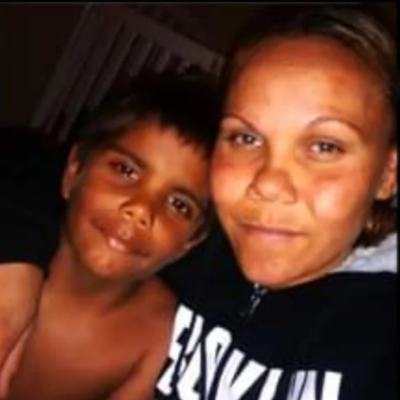
“He loved all sports, but basketball mainly, and taking his little brothers to school.
“And he was a perfectionist — he would always say, ‘Mum, wash my uniform, keep it neat and tidy’.”
A similar picture was painted by Cleveland’s former teacher at Laverton School, Ella Smillie, who said the bright boy with a big personality and an infectious smile had a special way of getting into the hearts and minds of all who knew him, including the staff he loved to yarn with.
Cleveland later left home and set out to find out more about his father’s lineage in Meekatharra, a small Mid West town about 760 kilometres north-east of Perth.
And it was there he begun to have issues with petty offences that became more serious, until he was intimate with the justice system by the age of 12.
But the strength of their relationship did not waver, Nadene said, as she retrieved an image of the card he drew her last Mother’s Day – now almost a year ago.
“I wish I could spend the day with you, Mum,” read the last card she would ever receive from him, decorated with flowers and hearts.
She broke down as she described discovering he had attempted to call her on October 11 – her birthday – hours before he took the steps to end his life.
She discovered the missed call after having her damaged phone screen repaired.
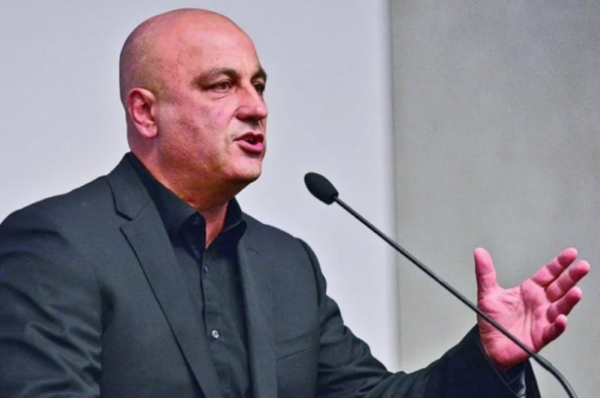
“I go to sleep every night and I wake up like this,” she said, wiping away tears with the sleeve of her shirt.
“If they knew Cleveland, they would know that he was a good, loving, caring kid.
“And he was just a kid. He was too young to be locked away in a prison like that, and it took his life.
“My son should have come home to me.”
It has been four months since Cleveland was laid to rest in Meekatharra, but Nadene struggled to talk about her son in the past tense and articulate what his legacy would be.
Youth detention expert and family advocate Gerry Georgatos, however, was adamant about what it should have been — a life such as anyone looked forward to, with children and grandchildren.
“Instead, he turned 16 in Unit 18 and didn’t survive six weeks after that,” Georgatos said.
“His legacy now will be to compel the sorts of changes that should have kept him alive and helped turn his life around.”
Georgatos is a suicidality researcher who has worked with large numbers of disadvantaged children and youth. He has been through decades’ worth of coronial inquests, and said little has changed.
Since the royal commission into Aboriginal deaths in custody in 1991, 562 more deaths in custody have been recorded, with most of the non-natural deaths classified as suicides.
According to the Australian Bureau of Statistics, Aboriginal and Torres Strait Islander prisoners account for one-third of all prisoners, despite making up just over 3 per cent of the population.
“The rate of deaths in custody, of recorded self-harm incidents, have been abominable, reprehensible, and have reinforced that we have entrenched, systemic deficits,” Georgatos said.
“It is not possible that this inquest won’t come out with damning findings, more damning and more profound than any inquest or inquiry to date — it will be the one that will compel long-overdue reforms, on the back of convictions.
“This unnecessary tragedy has been exposing a long-established culture of neglect and maladaptive misbehaviours in those vested with the immediate care of society’s most vulnerable children – the kids who finish in juvenile prisons.
“Deaths in custody occur because Australia spends on punishing and not on supporting.”
In the months since Cleveland’s death, more tales have emerged painting a grim picture of the culture inside Unit 18 — from allegations of guards making jokes about Cleveland’s death to claims, unveiled by ABC Perth, that youth custodial officers had made ghost noises in his cell as a further joke.
But Georgatos hoped the combined impact of the inquest, a Corruption and Crime Commission investigation and a class action inmates’ families have launched meant there would be justice over Cleveland’s death and the system would be overhauled.
“If Unit 18 was closed after its first week of abysmal fails, Cleveland would be alive,” he said.
“If the government transformed Banksia Hill into life-transformative, restorative models and Medicare rights were not denied to incarcerated children, Cleveland would be alive.
“If there was an external, independent Prisoner Notification Service for at-risk prisoners, along the lines of the police watchhouse Custody Notification Service, Cleveland would be alive.”
Crisis support is available from Lifeline on 13 11 14. For 24/7 crisis support run by Aboriginal and Torres Strait Islander people, contact 13YARN (13 92 76).
Contact us
Please provide a brief description of your claim.

